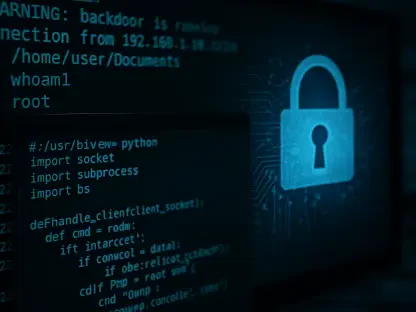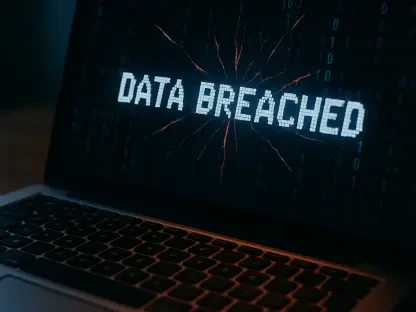Megan Clairmont recently sat down with Rupert Marais, an expert in endpoint and device security, cybersecurity strategies, and network management, to discuss a significant movement among European tech companies. Over 100 organizations have signed an open letter to the European Commission, urging the creation of a sovereign infrastructure fund to reduce dependency on foreign digital services. In this interview, Marais breaks down the motivations, implications, and challenges related to this call for action.
Can you give us an overview of the open letter to the European Commission (EC)?
Certainly. The letter is directed at the EC President Ursula von der Leyen and the Executive Vice-President for Tech Sovereignty Henna Virkkunen. It proposes the establishment of a sovereign infrastructure fund aimed at diminishing Europe’s reliance on foreign-owned digital services, particularly those from the United States. The letter emphasizes the urgency of achieving strategic autonomy in key sectors given recent geopolitical events.
What motivated almost 100 organizations to sign this letter?
The signatories are motivated by a shared concern over Europe’s over-reliance on foreign technology. They recognize the need to build a more resilient and autonomous digital infrastructure to ensure that Europe can safeguard its security, economy, and sovereignty in the face of global uncertainties.
Who are some of the prominent signatories of the letter?
Some of the notable signatories include Airbus, Dassault Systèmes, OVHcloud, SiPearl, and Nextcloud, among others. The range of signatories includes not only large corporations but also organizations like the European Startup Network, representing a diverse spectrum of the European tech ecosystem.
Why do the signatories believe a sovereign infrastructure fund is necessary for Europe?
They argue that the fund is essential for supporting strategic investments in fundamental technologies. By doing so, Europe can reduce its dependency on foreign tech and ensure greater control over critical digital infrastructure, which is vital for both security and economic stability.
How do the recent geopolitical events highlight the need for Europe’s strategic autonomy?
Recent geopolitical events have underscored vulnerabilities associated with dependence on foreign technology. For example, discussions around potential US actions like cutting off access to internet services have highlighted the risks and underscored the importance of having a sovereign infrastructure.
What specific sectors do the signatories believe are crucial for the sovereign infrastructure fund to invest in?
They are focusing on capital-intensive sectors such as semiconductors, cloud infrastructure, and other foundational digital technologies. These sectors are critical for maintaining a robust and independent digital economy.
How would such a fund help Europe lessen its dependence on US tech corporations?
By investing in local technology development and infrastructure, the fund would enable Europe to build its own capabilities and reduce the need to rely on US-based services and products. This would enhance Europe’s strategic autonomy and improve its bargaining position in the global tech market.
Can you explain the proposal for public investment, particularly in capital-intensive sectors like semiconductors?
The proposal suggests significant public investment from institutions like the European Investment Bank (EIB) and national public funding bodies. This investment would help European companies develop and manufacture critical technologies domestically, reducing reliance on foreign suppliers.
What role would the European Investment Bank (EIB) and national public funding bodies play in this initiative?
The EIB and national public funding bodies are expected to provide the financial backing necessary to support large-scale investments in key technology sectors. Their involvement is crucial for underwriting and allocating the substantial funds required to achieve the desired level of independence.
What are the expected challenges in implementing a formal requirement for the public sector to “buy European”?
One significant challenge is that many European-led solutions still involve complex supply chains with foreign components. Enforcing such a requirement could be difficult and may face pushback from entities accustomed to using more established, often foreign, products and services.
How do the signatories address the issue of involving complex supply chains with foreign components?
While they acknowledge the complexity, the signatories emphasize the importance of gradually building more complete and independent supply chains within Europe. This involves creating policies and incentives for local production and innovation to reduce foreign dependency over time.
According to the letter, what structural issues have led Europe to fall behind the US and China in the tech space?
The letter points to structural fragmentation within the European digital market as a major factor. This fragmentation has hindered consistent development and adoption of technology across the continent, making it difficult to compete at the same level as more unified markets like the US and China.
What are the security and reliability risks associated with Europe’s current tech dependencies?
Dependence on foreign digital services makes Europe vulnerable to security risks, such as potential disruptions of service or compromises in data integrity. Reliance on foreign technology can expose Europe to external pressures and threats, impacting both security and business continuity.
How do these tech dependencies compromise Europe’s sovereignty?
Tech dependencies give foreign entities a degree of control over critical aspects of European infrastructure. This can limit Europe’s ability to operate independently, manage strategic priorities, and make autonomous policy decisions, thereby compromising sovereignty.
How does the letter urge the European Commission to mobilize industries and coordinate a continent-wide strategy for digital sovereignty?
The letter calls on the EC to use its influence to bring together industry leaders, policymakers, and other stakeholders to develop and implement a cohesive strategy. This coordinated effort is necessary to drive the collective European movement towards digital sovereignty.
What previous concerns about US tech hegemony have been raised, and how do they relate to this initiative?
Concerns about US tech dominance have been ongoing. These concerns relate to issues like data privacy, economic control, and geopolitical influence. The current initiative aims to address these by strengthening Europe’s own tech capabilities and reducing reliance on US technology.
How does the DARE project and the EuroHPC JU funding fit into the efforts for European tech sovereignty?
The DARE project, supported by EuroHPC JU funding, seeks to develop open-source hardware and software using RISC-V architecture. These efforts are part of broader initiatives to create European alternatives to foreign technologies and enhance the continent’s tech sovereignty.
Can you discuss the recent actions that have heightened concerns about US dominance in technology?
Recent actions, such as discussions about the potential cutoff of Starlink services, have brought the issue of tech dependence to the forefront. Such scenarios highlight the precarious position that reliance on foreign technology can create and underscore the need for European autonomy.
What are the implications of potential US actions, like cutting off access to Starlink internet services, for Europe’s tech sovereignty?
Such potential actions illustrate how dependence on US technology can be a strategic vulnerability. If European countries lose access to critical services, it can severely impact their security and economic activities, making a strong case for the need for independent European solutions.
How have organizations like the EuroStack initiative contributed to this ongoing discussion?
The EuroStack initiative has been pivotal in raising awareness and developing strategies to counterbalance US tech influence. By creating platforms and advocating for European tech development, initiatives like EuroStack help drive the movement toward digital independence.
What are the financial burdens that US tech companies face due to European Union regulations, according to the Computer and Communications Industry Association (CCIA)?
According to the CCIA, US companies incur substantial costs complying with EU digital regulations, such as the Digital Markets Act. These regulations involve obtaining user consent for data usage and other compliance requirements, which the CCIA claims result in billions of dollars in expenses.
How do regulations such as the Digital Markets Act (DMA) affect US tech companies operating in Europe?
Regulations like the DMA aim to ensure fair competition and data protection, but they can impose operational and financial burdens on US tech companies. These companies must adapt their operations to comply with stringent EU standards, which can increase their costs and complexity.
What is the stance of the European Commission on the claims made by the CCIA about these financial burdens?
While the European Commission acknowledges the regulatory challenges, it emphasizes that these regulations are essential for protecting consumer rights and promoting fair competition. The EC believes that such measures are necessary to create a balanced and trustworthy digital market in Europe.
Do you have any advice for our readers?
Stay informed and engaged with developments in tech sovereignty. Understand the geopolitical implications and the importance of supporting local tech initiatives. Your awareness and involvement can help drive policies that balance innovation, security, and independence.









